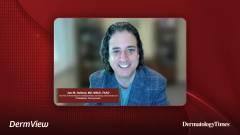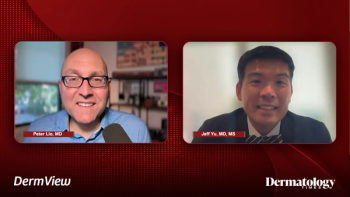
Addressing Patients' Concerns With Biosimilars
Drs Roy M. Fleischmann and Joel M. Gelfand discuss addressing patient concerns with biosimilars and provide take-home messages to clinicians utilizing biosimilars.
Episodes in this series

Roy M. Fleischmann, MD: The last question that we should address is the following: How would you introduce the patient to the fact that they will be or could be taking a biosimilar? What type of discussion would you have with the patient?
Joel M. Gelfand, MD, MSCE, FAAD: This is a great question, where we’ll have to come up with our ways of explaining a very complicated aspect to our patients in ways that are understandable and reassuring. I’ll be telling most of my patients that this is good news, that these products have been carefully tested and studied at a number of levels and their experience should basically be the same. The benefit of having these biosimilars available is that it should make the therapies more accessible to our patients because they’re so expensive.
It’s going to be challenging, though. With my own practice, we have so many options for psoriasis. I’ll often say, “We have to try biologic A,” and we agree on it. I send them the information on it and then the insurance company says, “No, it’s going to be biologic B.” Even when we agree it’s biologic A, they may be told it’s going to be biologic B and say, “But it isn’t the drug you told me.” It’s now this other thing with a different name they don’t recognize, and we have to go back and have that conversation. That’s likely to be a big source of anxiety for our patients. We know a lot of our patients are reluctant to go on biologics sometimes, so adding these additional complexities and barriers for our patients may cause harm in individuals who tend to be pretty reluctant or anxious about this process from the get-go.
Roy M. Fleischmann, MD: It’s all about patient education, though. When I see a new patient with rheumatoid arthritis—it’s the easiest one—I can persuade 99% of patients to go on methotrexate for the first drug. It isn’t a big problem. Then when 70% of patients respond to methotrexate, and then we have all those other molecules available. I talk about all those molecules. You give the patient informed consent, which has gotten much more complex as time has gone on because there are many more drugs. Then I ask, “Which would you prefer first? Which would you prefer second?” In the end, I say, “Your insurance company is going to make the decision. I want to know what you’d do if the insurance company doesn’t pick your first choice.” They pick one. “What do we do if that one doesn’t work?” That’s how I handle that, and it usually works.
In speaking to a patient, you have to simplify, just as you did, that the biosimilars have shown that they’re very similar to the reference product and that almost all patients who will respond to a reference product will respond to a biosimilar. It’s that switch patient, the ones who do well, where I think there’s a little more angst. Even there, I’d say, “The literature shows that 95% of patients do well,” but I like to have the availability to switch back to the bio-original if I can.
Joel M. Gelfand, MD, MSCE, FAAD: The critical thing for clinicians to know is the importance of instilling confidence, because the data give us the confidence that’s well earned. In my practice, when I choose mechanism of action A and then the insurance company says, “No, you have to use B,” as long as I think B is a very good option, I’ll go back to the patient and say, “The company wants you to use this biologic. It’s an outstanding option for you. It’s very likely to clear your skin, and I recommend it.” Almost all my patients in those settings are OK with that situation and are willing to make that switch. It should be an even easier thing to instill confidence when we’re staying within the same mechanism of action and a similar biologic. They should expect the same experience, whether we call it adalimumab or whatever the biosimilar name is going to be.
Roy M. Fleischmann, MD: Thank you. To summarize, the prescribing physician has to have confidence in the biosimilar, and then the physician, the nurse practitioner, and all the ancillary personnel have to have that same degree of confidence. I can imagine a physician telling the patient, “There’s almost no difference between these drugs,” and then the infusion nurse or some laboratory person says, “I wouldn’t take a biosimilar.” Who’s the patient going to listen to? A well-educated physician or the laboratory tech? It’s going to be the lab tech.
Joel M. Gelfand, MD, MSCE, FAAD: Or it might be social media. It might be what someone googles online or reads in a chatroom, where someone says, “I was doing OK on this, and I went on that, and now I’m having a problem.” As clinicians, we have to expect that there will be some uncertainty, and we’ll have to be there for our patients, empathize with them, and help them make the best decisions possible and move forward in a way that’s of best interest to their health.
Roy M. Fleischmann, MD: Thank you for watching this Dermatology Times® presentation. We hope you found this presentation to be rich and informative.
Transcript edited for clarity
Newsletter
Like what you’re reading? Subscribe to Dermatology Times for weekly updates on therapies, innovations, and real-world practice tips.


















